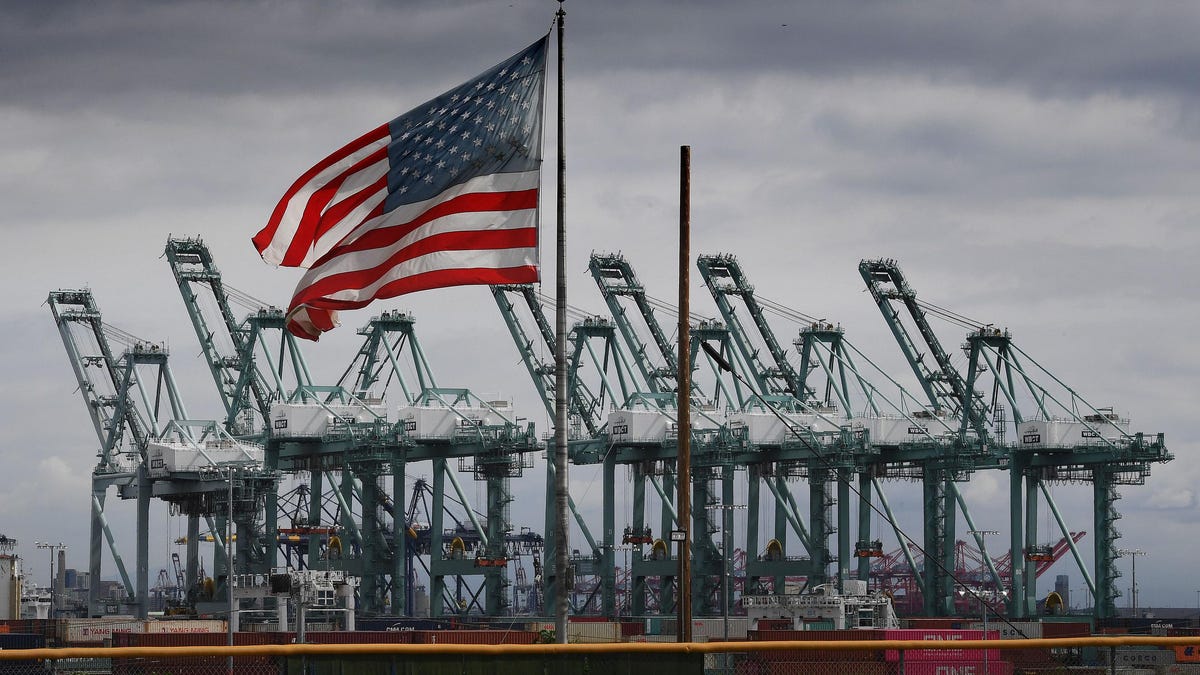Topline
The U.S. economy grew far less than expected in the first quarter as deteriorating business conditions and a weak housing market continued to weigh on growth despite gains in consumer spending—and some economists predict the weakness will only get worse in the coming months, as high interest rates, stubborn inflation and now tightening credit conditions continue to weigh on markets.
Key Facts
U.S. gross domestic product grew at an estimated annual rate of 1.1% in the first quarter—after 2.6% growth in the third quarter—coming in lower than the 2% economists expected, the Bureau of Economic Analysis reported Thursday.
The increase primarily reflected increases in consumer spending, exports and government spending that were partly offset by declines in business investments and the housing market, the government said.
In an email, Chris Zaccarelli of Independent Advisor Alliance called the GDP data “the worst of both worlds,” with growth down more than expected and the PCE Price Index, a measure of prices that consumers pay for goods and services, also unexpectedly climbing (the core index went from 4.4% to 4.9%).
The job market and consumer spending have held up “remarkably well” despite the Federal Reserve aggressively raising rates over the past year, but the “economy is slowing and inflation is not anywhere near” the central bank’s long-time 2% target, says Zaccarelli, cautioning the rate hikes will only lead to a deeper slowdown if prices don’t moderate.
Pantheon Macro chief economist Ian Shepherdson isn’t more optimistic: He notes overall growth was buoyed by much warmer-than-usual weather in January and February and a one-time cost of living adjustment to social security payments—two factors whose impact should fade as the year progresses.
Further, the outlook for business investments has weakened in recent weeks—suggest the economy is likely to shrink outright in the second and third quarters, Shepherdson projects, warning clients: “Recession incoming.”
Crucial Quote
“Weighed down by persistently elevated prices, high interest rates and now tightening credit conditions… economic growth has slowed from nearly 6% in the fourth quarter of 2021 to less than 2%,” says EY chief economist Gregory Daco, predicting the factors will only continue to constrain businesses and markets in the coming months.
Key Background
The Federal Reserve’s interest rate hikes—and central bank tightening around the world—triggered steep downturns in the housing and stock markets last year, but the recession many experts predicted could happen has yet to materialize. Still, signs the turmoil is spreading have intensified in recent months, with firms in a growing array of industries announcing layoffs and even Fed officials earlier this month saying they now expect the U.S. will fall into a “mild recession” later this year. The timing would make sense: According to investment firm Schroders, a rate hike can take up to two years to fully ripple across the economy.
What To Watch For
The Fed’s next policy meeting concludes next Wednesday. The futures market implies a 15% chance the central bank will keep rates the same and an 85% chance it will again raise rates by 25 basis points, according to the CME FedWatch Tool. Over the past few weeks, the odds have only grown in favor of another rate hike.
Labor Market Adds 236,000 Jobs In March—Lowest Since 2020—As Economists Worry Recession May Be ‘Underway Now’ (Forbes)
Read the full article here












